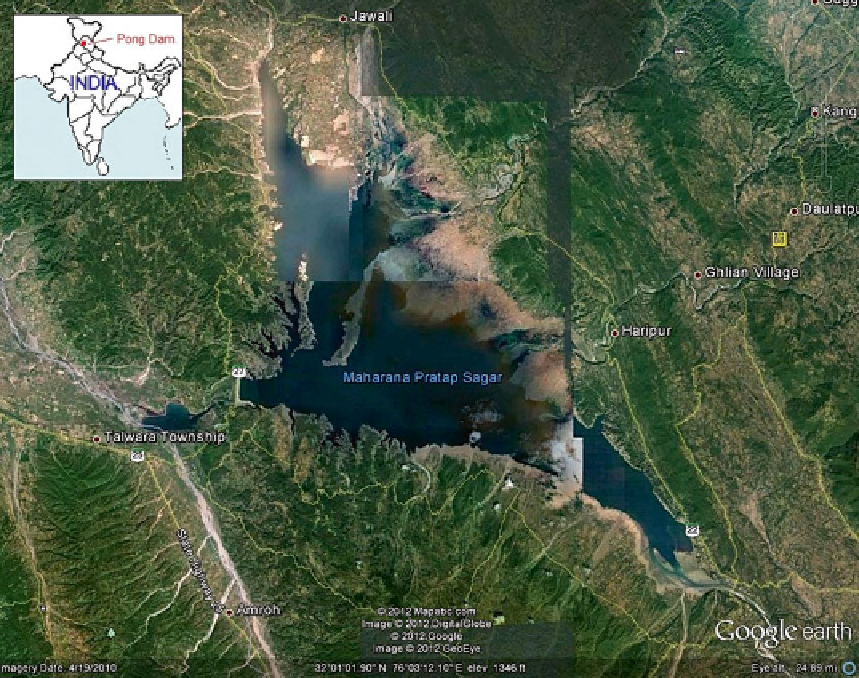Environmental Engineering Reference
In-Depth Information
Fig. 18.1
Imagery of the Pong Dam wetlands, Himachal Pradesh
of 426.72 m. The catchment area of reservoir is
12,560 km
2
with a 35,500,000 m
3
maximum
water holding capacity. The reservoir span is
about 42 km in length and covers a surface of
260 km
2
. Monsoon rains between July and
September are a major source of water supply into
the reservoir, apart from snow and glacier melt
from Dhauladhar ranges (Editor-Director
2009
).
The reservoir or the lake is a well-known wildlife
sanctuary and is one of the 25 international wetland
sites recognized in India by the Ramsar Convention.
The reservoir was declared as a bird sanctuary in
1983. The national and global signifi cance of the
sanctuary is enhanced due to its aquatic bird
diversity (Kumar
2011
). In terms of wildlife and
faunal distribution, the outlet of the dam and
water-logged area adjacent to the dam are also
included in Pong Dam wetland as it signifi cantly
supports to the fauna of the area. The peripheral
land area of the reservoir has mixed evergreen
and deciduous pine forests on surrounding hills.
Eucalyptus trees have also been grown in the area.
The forest growth provides enough sustenance to
the migratory birds. The tree species of the forest
area are
Acacia
sp.,
Syzygium cumini
,
Dalbergia
sissoo
,
Mangifera indica
,
Morus
sp.,
Ficus
,
Bauhinia variegata
,
Phyllanthus emblica
and
Prunus
. A variety of shrubs, grasses and climbers
are also abundant in the forested tracts. Seasonal
water-level fl uctuation of the reservoir between
the maximum and the minimum levels does not
permit signifi cant growth of hydrophytes; however
some amount of vegetation has been noticed in
marshy puddles and pools downstream.

Search WWH ::

Custom Search